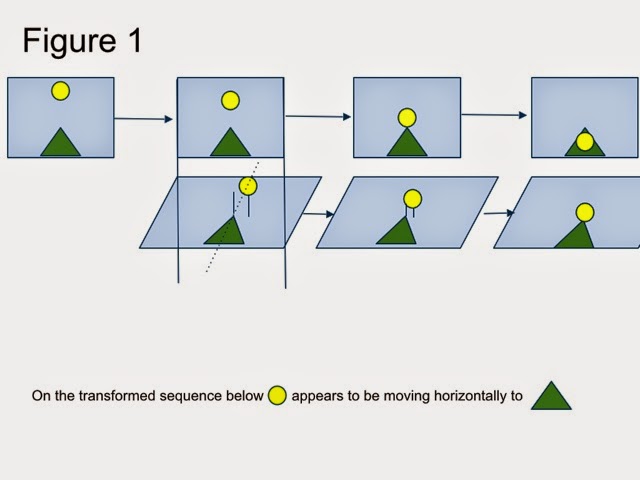The catch is while it takes a long time to figure out how to do it, the implementation is actually quite simple.
Pulfrich Effect is well-known 3D conversion technic that works pretty well for some scenarios such as camera moving horizontally for static scenes (like films taken on a moving train for the landscapes). However, for most of the video scenes, you don't expect object moving only horizontally and hence the application of Pulfrich 3D is quite limited.
Years back, we were thinking why we can't get the vertical movement also generate 3D effects? That's when we start to develop and come out our theory namely Vertical Pulfrich Effects
Figure 1 below gives a very clear demonstration of how it works:
The original video sequence on the first row shows a dropping ball that has no vertical movement. Such kind of video would not be able to generate Pulfrich 3D effect. 3D video would not be generated by such video through the time delay of Pulfrich algorithm.
However, by doing a skew filter on the original video sequence, you can see in the time sequence on the second row below, the ball is actually moving horizontally toward the triangle. This enables the possibility to add Pulfrich effect to this video, which was originally not possible.
Furthermore, the converted 3D video also perserve most of the Pulfrich effects horizontally. Any vertical or hortizontal motion in the video sequence would hence generate 3D effects through 3Dfier 3D conversion algorithm. This is why 3Dfier directshow filter has become one of the best 2D to 3D conversion solutions.
Hereby we decide to reveal more details on how we did it and we are open to the possibility to license our IP and source code to any party who is interested in our solution.
Our IP is not only good for software implementation for 3D conversion, it has also covered the possibility to create optical-only 2D to 3D solution by adding optical filter to change shape on one eye while creating lighting difference between two eyes. Welcome to contact us to find more details.
Although 3Dfier algorithm would never be able to offer a true 3D construction from 2D images,
most of the 2D to 3D conversion solutions are to create 3D illusions after all.The question is which solution can achieve a better one and give enjoyable user experience!

